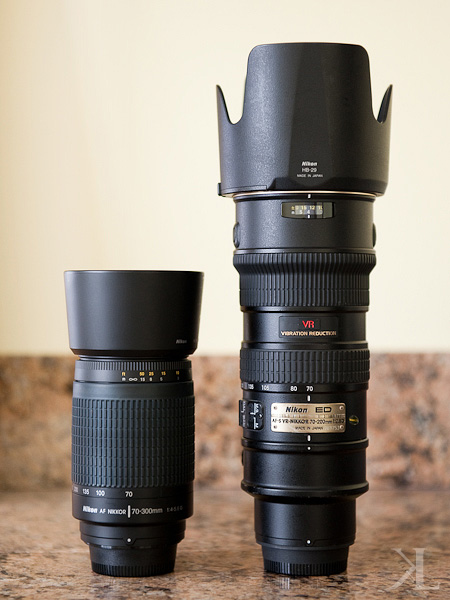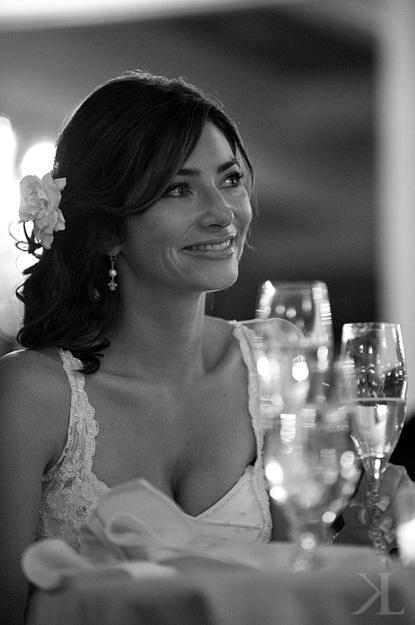Do you know how to read those numbers on the tires of your vehicle? Do you know what they mean? A lot of people don’t even pay attention to them, and most people don’t even have to worry. When it comes to camera lenses, however, many consumers and amateur photographers are puzzled by the nomenclature. f/3.5. f/5.6. f what?!
As digital cameras become less expensive, a lot of people are considering SLR (single lens reflex) cameras. And with each camera, there’s a variety of lenses to choose from. Which one should you get?
There are two basic labeled specifications, if you will, of a camera lens — focal length and maximum aperture.
The first one most people understand, but the other tends to be more confusing than not to most people. Some people ignore it, which is usually fine. For people who intend to be more serious about their photography, however, it might be good to know what it means.
Every lens has an opening, called an aperture. After all, that’s how light gets into the camera and exposes the film — or in these days with digital cameras, the camera’s sensor. The thing that most people don’t know is that the maximum size of the aperture can vary from one lens to another. One lens might be a 2.8, and another might be a 3.5-4.5. These numbers can be found on any camera lens — even on most point-and-shoot cameras.
Without going into much technical detail, the smaller the number, the wider (or bigger) the lens aperture. Why does smaller mean bigger? Well, if you refer back to the first paragraph, you’ll see the values written as f/3.5 and f/5.6. This is equivalent to f*1/3.5 and f*1/5.6. So the value is actually the inverse of the number. On the camera lens, you’ll see these values written as 1:3.5 and 1:5.6, respectively.
Smaller numbers (bigger apertures) are faster. Why? Because bigger apertures let more light into the camera, thereby enabling faster focus; just like how our eyes focus better when they’re wide open and when there’s more light. When we compose a photograph, our camera uses the lens at its maximum aperture to focus. Then, when the shutter is released, the camera stops down the aperture to whatever its value was set at for that particular exposure. In photography lingo, a 2.8 lens is said to be faster than a 3.5 lens. It’s faster because it focuses faster and also because in the exposure equation a wider aperture yields a faster shutter speed.

Left: $150 70-300mm f/4.5-5.6 lens; Right: $2,000 70-200mm f/2.8 lens.
As you can see above, speed also comes with a price. You can verify the prices here and here if you want. You’ll also note that the smaller lens is actually a bigger zoom. Of course, there are other characteristics that determine the quality of a lens, but for the most part a faster lens is more expensive given the same focal length.
Okay, so now you know that f/2.8 is faster than f/3.5, and f/3.5 is faster than f/5.6. So what does f/3.5-5.6 mean? This aperture range is something you’ll see on zoom lenses. It just means that the maximum aperture at the wide end of the zoom is different from the maximum aperture at the telephoto end. That’s right, the maximum aperture varies throughout the zoom range. In the days before sophisticated metering and auto exposure modes, variable aperture zooms presented some complications for photographers in determining correct exposure. These days, it’s not a problem. Just know that your 18-200mm f/3.5-5.6 zoom lens is faster at 18mm than it is at 200mm.

200mm, 1/60 sec @ f/2.8, ISO 5600
Above is an example of an image nearly impossible to capture sharply with a slower lens. For this shot, a 200mm zoom with a maximum aperture of f/5.6 (vice f/2.8) would require a shutter speed of 1/15 of a second — an exposure duration that is extremely difficult to handhold at any focal length. And even if you could be steady during a longer exposure, at least one of two things are likely to happen — 1) the subject will move or 2) the lens won’t focus fast enough to capture the moment.
Got more questions about lenses? Write to me directly and/or leave a comment below. 🙂








Thanks for the clear and simple explanation, I’ve been looking around for a telephoto lens and I now know what to look for.
Thanks for the aperature explanation. There are so many things to remember when learning about taking pictures. I get them all confused.
Here’s my dilemma, I’m taking pictures in a gym on Saturday. I’ve been reading up and it seems I should set up my camera at ISO 400 or 800 and set the aperature low. The lowest is 3.6 and when I try to take pictures, it comes out so dark. What should I adjust or is there no hope with the lens that I have?
Thanks in advance.
Hi Sherry! What shutter speed are you using? Seems like your shutter speed is too fast, so you will have to use a slower shutter speed if you can’t use higher ISOs (1600+). Inside a gym with just the ambient light, you will be forced to use slower shutter speeds, so you will have to compensate with higher ISO. Practice shooting in your house with the ceiling lights on; in general, if you can shoot in those conditions, you can shoot in the gym. One of the main factors will be how quickly your subjects are moving. If you’re shooting sports, you will most likely need fast shutter speeds to prevent subject blur. This can only be accomplished with 1) fast lenses and/or 2) high ISO when working indoors without flash. Hope this helps! 🙂